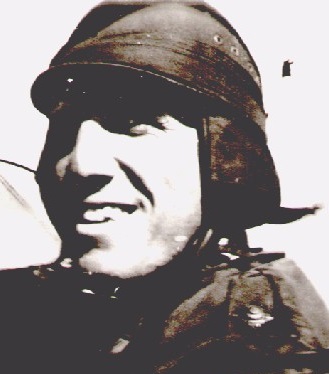 Figure 1. August 1918. The earliest close-up image found of the ‘Cork Aviation Helmet’, taken at the Royal Flying Corps/Royal Air Force, Flying School, Ismailia, Egypt, worn by Second Lieutenant Spaulding. This is the RFC 1917 Pattern, ‘Helmet, Cork Aviation’, externally the main shell is near identical to later versions, with puggaree, four side vents and a typical ‘sun helmet’ ventilation gap between the headband and shell. The outer covering at this time was made-up of four segments of cloth, a front and side seam can just be made out. A large rear brim can be seen shading the neck; however it has a very narrow and thin front peak, at this time these peaks were not part of the cork shell but were attached to the canvas cover. Soon, at least by mid-1919, the design was ‘revised’, adding a complete brim and extending the front peak slightly to help shade the face. After a 1926-27 review the liner and earflap fixings were also modified; it stayed in that configuration up to 1942. The ear-pockets can be seen to be holding large diameter gosport tube earpieces. (Image, see here). Continue reading
Figure 1. August 1918. The earliest close-up image found of the ‘Cork Aviation Helmet’, taken at the Royal Flying Corps/Royal Air Force, Flying School, Ismailia, Egypt, worn by Second Lieutenant Spaulding. This is the RFC 1917 Pattern, ‘Helmet, Cork Aviation’, externally the main shell is near identical to later versions, with puggaree, four side vents and a typical ‘sun helmet’ ventilation gap between the headband and shell. The outer covering at this time was made-up of four segments of cloth, a front and side seam can just be made out. A large rear brim can be seen shading the neck; however it has a very narrow and thin front peak, at this time these peaks were not part of the cork shell but were attached to the canvas cover. Soon, at least by mid-1919, the design was ‘revised’, adding a complete brim and extending the front peak slightly to help shade the face. After a 1926-27 review the liner and earflap fixings were also modified; it stayed in that configuration up to 1942. The ear-pockets can be seen to be holding large diameter gosport tube earpieces. (Image, see here). Continue reading
Category Archives: World War I
The Mystery RAF Helmet ‘Helmet, Aviation’ 22C/12
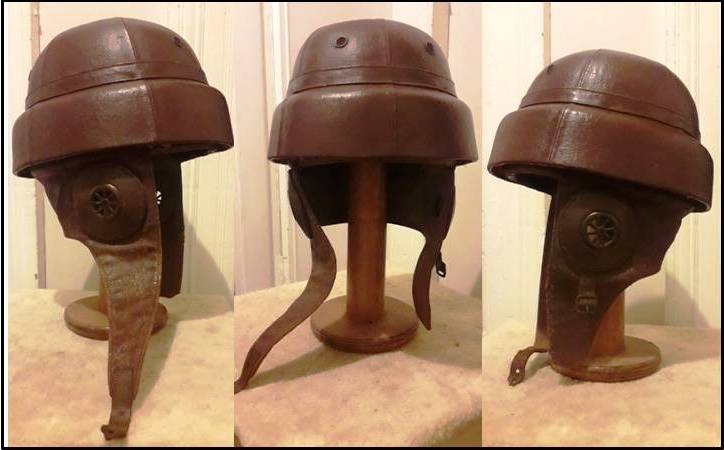 Figure 1. Contemporary documents point to Curtis’s 1916, 2nd patent the ‘Improved “Warren” Safety Helmet’ being the best candidate for the identity of the 1920-1924 RAF listed ‘Helmet, Aviation’ 22C/12. The term ‘Helmets, Aviation’ had been on RFC lists since 1914 and it would seem the term was even then applied to protective helmets of a similar type. The cork structure and the use of vent collets over the ears would imply these helmets were made in the same workshops as sun helmets (images courtesy of Judith Mclay). Continue reading
Figure 1. Contemporary documents point to Curtis’s 1916, 2nd patent the ‘Improved “Warren” Safety Helmet’ being the best candidate for the identity of the 1920-1924 RAF listed ‘Helmet, Aviation’ 22C/12. The term ‘Helmets, Aviation’ had been on RFC lists since 1914 and it would seem the term was even then applied to protective helmets of a similar type. The cork structure and the use of vent collets over the ears would imply these helmets were made in the same workshops as sun helmets (images courtesy of Judith Mclay). Continue reading
Another “Forgotten” Colonial Power – The Danish Sun Helmet
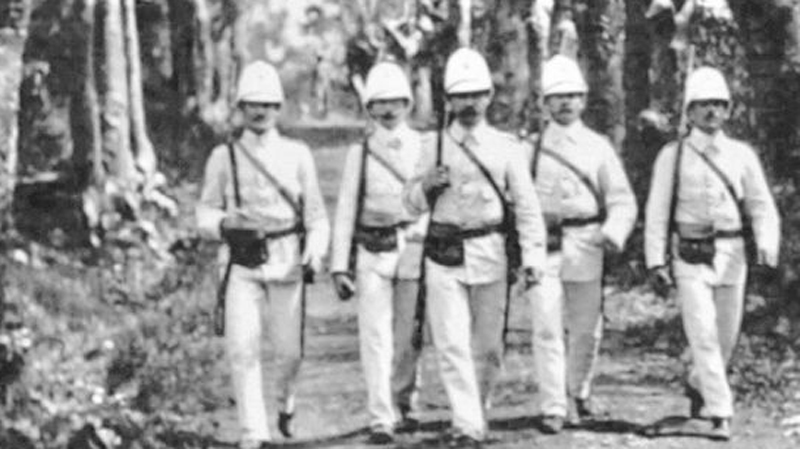
Today when people think of Danish colonies Greenland likely comes to mind, and that’s not exactly the sort of place where a sun helmet is often required. However, Denmark was a colonial power in tropical regions and while it never really competed with the British, French, Spanish or Dutch in the Caribbean, the first Danish colony was founded in the West Indies in the 1660s.
The Danish West India Company was organized on March 11, 1672 and soon after established a settlement on St. Thomas. The Danish West Indies were invaded twice by the British – the first time during the French Revolutionary Wars and the second time during the Napoleonic Wars. Following those bloodless invasions the islands were at relative peace and managed by the Danish West Indies Gendarmerie as well as the West Indian Military Forces. Continue reading
The German Schutztruppen Slouch Hat
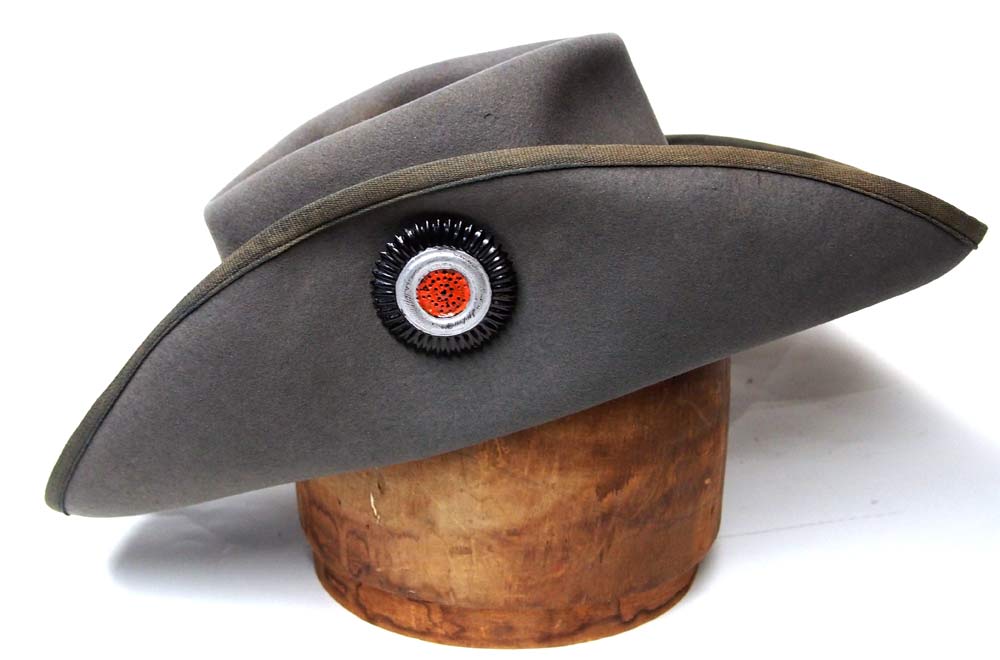
While the sun/pith helmet remains the iconic headdress of the colonial empires established by the European powers in the second half of the 19th century it wasn’t the only headgear favored by those colonial forces. Indigenous colonial forces utilized a variety of headdress of course, while slouch hats were increasingly favored by various units beginning in the 1880s. One of the more notable variations was the German slouch hat, which largely used in German South West Africa. Continue reading
The Felt Austro-Hungarian Sun Helmet
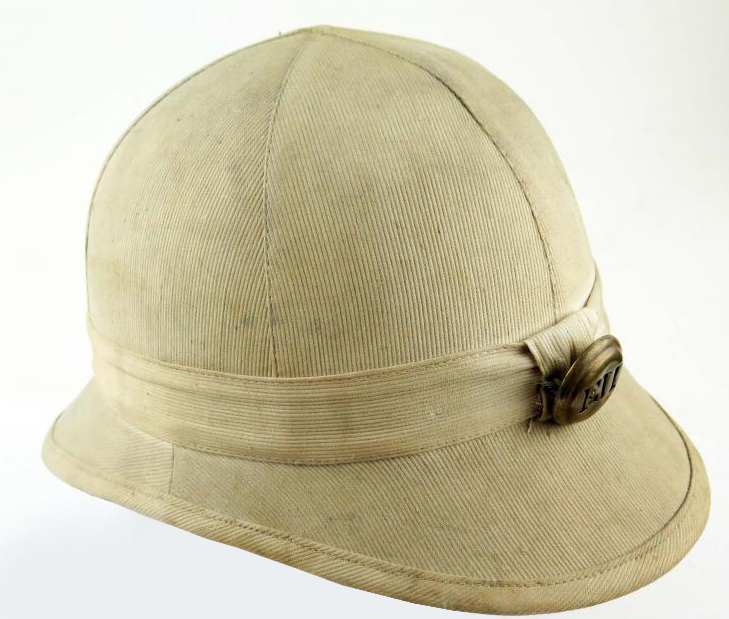 The use of a sun helmet in the Austro-Hungarian army dates back to the Crete expedition of 1897-98 when a quantity of helmets were specially ordered from a company in Vienna. The need for a sun helmet arose again when Austro-Hungarian troops were sent to Palestine in 1915 to aid the Turkish army. With temperatures up to 120ºF in the summer, these 3,000 troops needed a tropical helmet to replace their wool field caps.
The use of a sun helmet in the Austro-Hungarian army dates back to the Crete expedition of 1897-98 when a quantity of helmets were specially ordered from a company in Vienna. The need for a sun helmet arose again when Austro-Hungarian troops were sent to Palestine in 1915 to aid the Turkish army. With temperatures up to 120ºF in the summer, these 3,000 troops needed a tropical helmet to replace their wool field caps.
Two Austrian companies were contracted to make helmets, but many other hat makers also stepped up to provide “private purchase helmets.” Continue reading
New Zealand and the Peaked Felt Hat

As we approach the 100th year anniversary of the end Great War in 1918, a lot of retrospective thinking, review and discussion has been taking place.
One area of discussion is the interruption of the uniforms, equipment, regulations and distinctions of the New Zealand military forces. One of these distinctions is the peaked felt hat, commonly called the lemon squeezer. When and how did it begin? How did it evolve? Did New Zealand invent the peaked felt hat? And which was the first unit to officially wear the peaked felt hat?
Hawkes & Company’s Steel Helmet Connection
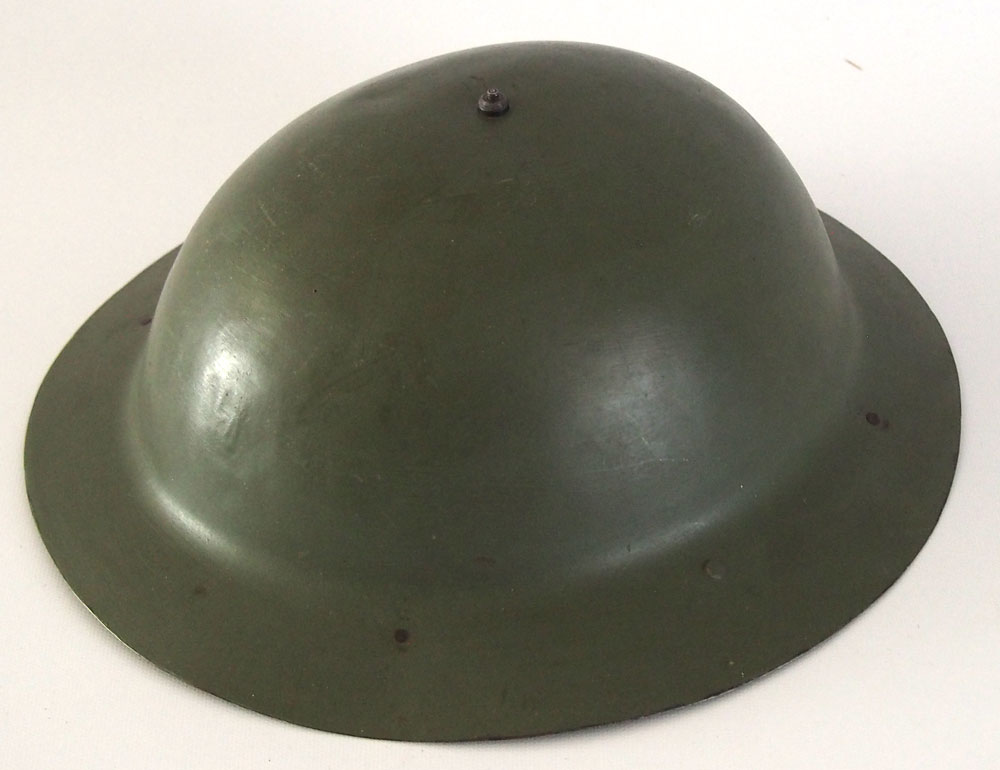 While steel helmets never completely disappeared from the battlefield – and helmets were worn by cavalry units throughout the 18th and 19th centuries – at the outbreak of the First World War in 1914 most British infantrymen wore only the Home Service Helmet as part of a dress uniform and for parade type duties. Forage caps were the standard headdress for soldiers in the field, but by 1916 it was apparent that soft caps as well as sun helmets that were worn in tropical regions weren’t enough to protect against head wounds from artillery barrages or other low velocity impacts. Continue reading
While steel helmets never completely disappeared from the battlefield – and helmets were worn by cavalry units throughout the 18th and 19th centuries – at the outbreak of the First World War in 1914 most British infantrymen wore only the Home Service Helmet as part of a dress uniform and for parade type duties. Forage caps were the standard headdress for soldiers in the field, but by 1916 it was apparent that soft caps as well as sun helmets that were worn in tropical regions weren’t enough to protect against head wounds from artillery barrages or other low velocity impacts. Continue reading
